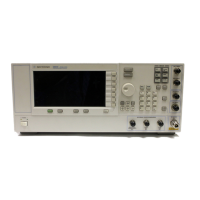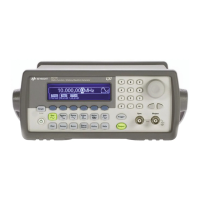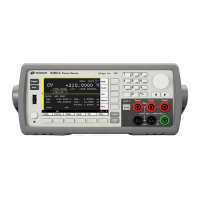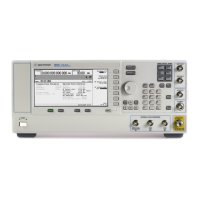156 E8257D/67D, E8663D PSG Signal Generators Service Guide
Troubleshooting
RF Path Description (Frequency Generation, Level Control, and Modulation)
Analog model option hardware includes:
—a removable compact flash drive
1
(Option 008) for external waveform
storage
Vector Model
Hardware
In addition to the analog hardware, vector models add the following hardware:
— A13 I/Q Multiplexer
— A27 40 GHz Doubler (> 20 GHz models)
— A35 3–20 GHz I/Q Modulator
— A37 44 GHz Upconverter (> 20 GHz models)
Vector model option hardware includes:
— a baseband generator (Option 602) for internal I/Q waveform generation
— an internal hard drive
2
(Option 005) for internal waveform storage
(discontinued)
—a removable compact flash drive
3
(Option 009) for external waveform
storage
Assemblies that differ between vector and analog models include:
— an A8 Output assembly that includes an I/Q modulator for frequencies
below 3.2 GHz
— an A19 Power Supply and A31 Motherboard that can handle increased
power requirements
— an A26 Microcircuit Interface Deck and front and rear panels that provide
the digital interface
A6 Frac–N
The A6 Frac–N is part of the Synthesis Loop and the RF lowband path.
The RF signal from the A29 20 GHz Doubler is amplified, filtered, divided
(dividers generate RF output frequencies below 3.2 GHz), and then amplified
again before being routed to the A8 Output.
The A8 Output provides the A6 Frac–N a pre–level bias voltage to maintain the
required RF output level to the A8 Output assembly.
Troubleshooting note: To check the A6 Frac–N RF output level to the A8
Output, remove the A8 Output from the signal generator while the signal
generator is powered on. If the A8 Output is removed while the power is on, the
pre–level bias is maintained on the A6 Frac–N, maintaining the RF power level
on the A6 Frac–N output. Turn the instrument off before reinstalling the A8
Output.
1. Instruments with serial prefix ≥ 4829.
2. Instruments with serial prefix < 4829.
3. Instruments with serial prefix ≥ 4829.

